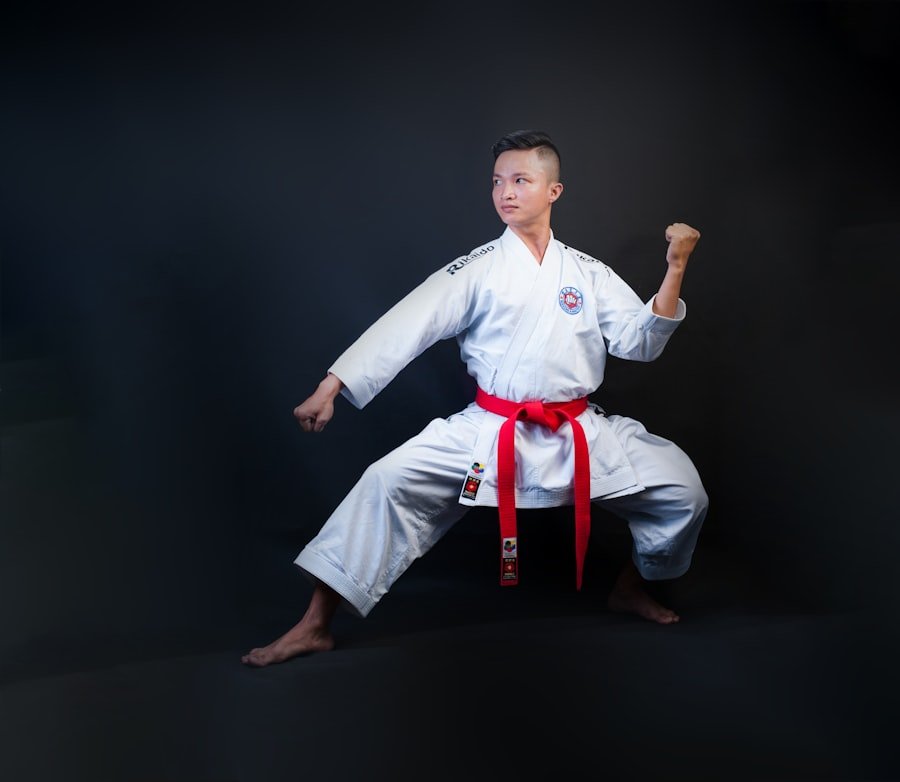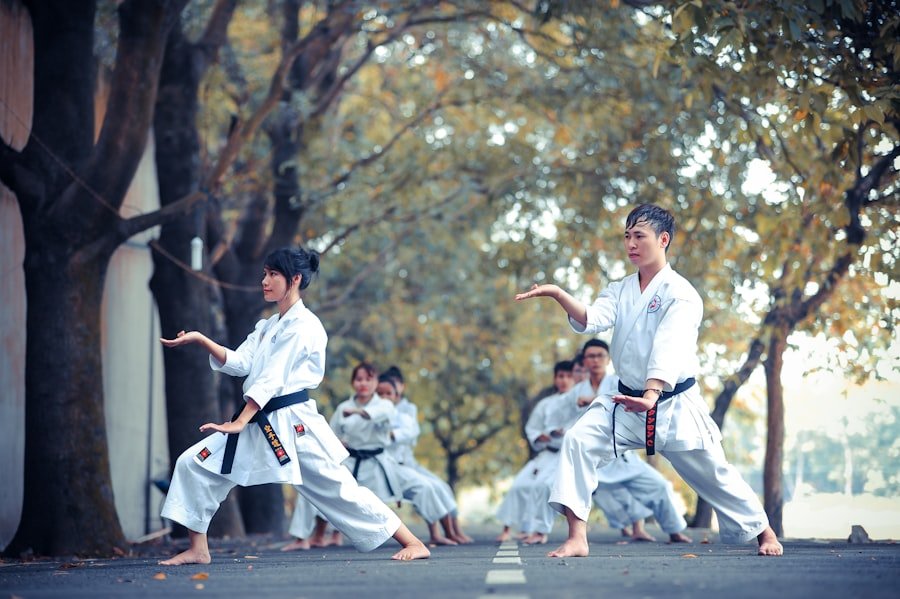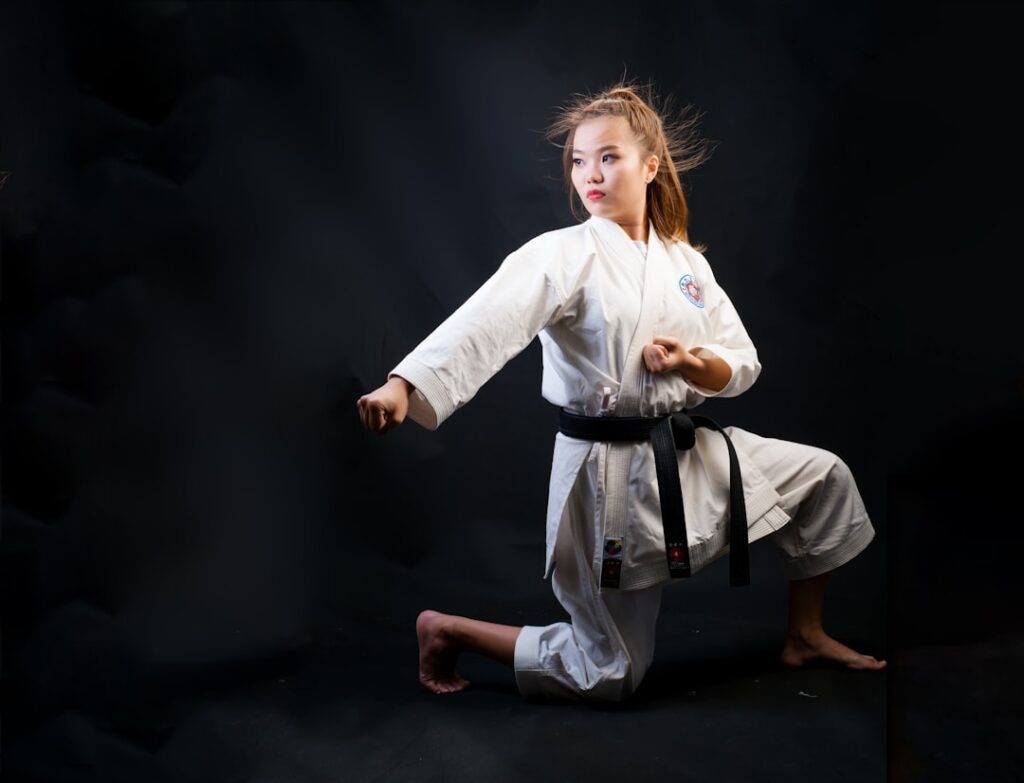The Bubishi, often regarded as the “Bible of Karate,” is a seminal text that has profoundly influenced martial arts, particularly in the realms of Karate and Kung Fu. This ancient manuscript, originating from China and later adopted by Okinawan martial artists, serves as a compendium of knowledge encompassing techniques, philosophies, and strategies that have shaped the practice of martial arts for centuries. The Bubishi is not merely a manual of combat; it is a rich tapestry woven with historical narratives, cultural insights, and profound wisdom that transcends the physicality of martial arts.
As one delves into the pages of the Bubishi, it becomes evident that this text is a treasure trove of information. It encapsulates the essence of martial arts training, offering practitioners a glimpse into the mindset required for mastery. The Bubishi is replete with illustrations, diagrams, and poetic verses that elucidate the principles of combat while simultaneously imparting moral teachings.
This duality of purpose makes the Bubishi an invaluable resource for both novice and seasoned martial artists alike, inviting them to explore not only the techniques but also the philosophical underpinnings that govern their practice. Spaces are filling up fast! Register for Chinese classes at the LC Chinese School in Oslo today.
Table of Contents
ToggleSummary
- The Bubishi is a classic martial arts text that holds valuable insights into the practice of karate and kung fu.
- Understanding the historical significance of the Bubishi is crucial for appreciating its impact on martial arts traditions.
- Linguistic accuracy is essential in unlocking the secrets and wisdom contained within the Bubishi.
- Exploring the cultural context of the Bubishi provides a deeper understanding of its teachings and principles.
- The Bubishi’s secrets can be applied to enhance training in karate and kung fu, making it a valuable resource for modern martial arts practice.
The Historical Significance of the Bubishi
The historical significance of the Bubishi cannot be overstated. Its origins can be traced back to the 19th century, during a time when martial arts were evolving in response to external influences and internal developments. The text is believed to have been compiled by various masters who sought to preserve their knowledge in a time of political upheaval and cultural exchange.
As such, the Bubishi serves as a historical document that reflects the socio-political landscape of its time, providing insights into the struggles and triumphs of martial artists who endeavoured to maintain their traditions amidst change. Moreover, the Bubishi has played a pivotal role in bridging Eastern and Western martial arts philosophies. As it made its way from China to Okinawa and eventually to Japan, the text facilitated a cross-pollination of ideas that enriched martial arts practices across cultures.
The Bubishi’s teachings have been instrumental in shaping modern Karate, influencing various styles and schools that continue to thrive today. Its historical significance lies not only in its content but also in its ability to connect diverse martial arts communities through a shared understanding of principles and techniques.
Understanding the Language of the Bubishi

To fully appreciate the depth of the Bubishi, one must engage with its language. The text is primarily written in classical Chinese, which poses challenges for contemporary readers unfamiliar with its nuances. Classical Chinese is characterised by its brevity and ambiguity, often relying on context and cultural knowledge for interpretation.
This linguistic complexity adds layers of meaning to the text, making it essential for scholars and practitioners to approach it with a keen understanding of both language and culture. Furthermore, the language of the Bubishi is imbued with metaphorical expressions and idiomatic phrases that reflect the philosophical undercurrents of martial arts. For instance, terms related to movement and energy are often described in poetic terms that evoke imagery rather than straightforward definitions.
This stylistic choice not only enhances the aesthetic quality of the text but also invites readers to contemplate the deeper meanings behind each phrase. Understanding this language requires not only linguistic skills but also an appreciation for the cultural context in which these expressions were crafted.
Translating the Bubishi’s Secrets
Translating the Bubishi is a formidable task that demands both linguistic proficiency and a deep understanding of martial arts principles. Many translators have attempted to render the text into modern languages, yet each translation often reflects the translator’s interpretation and perspective. This subjectivity can lead to variations in meaning, emphasising the importance of careful consideration when studying different translations.
Moreover, translating martial arts texts like the Bubishi involves more than just converting words from one language to another; it requires an exploration of concepts that may not have direct equivalents in other languages. For example, terms related to energy flow or spiritual cultivation may necessitate extensive footnotes or explanations to convey their significance accurately. As such, translators must strike a delicate balance between fidelity to the original text and accessibility for contemporary readers, ensuring that the essence of the Bubishi’s teachings remains intact.
The Importance of Linguistic Accuracy in Studying the Bubishi
Linguistic accuracy is paramount when studying the Bubishi, as even subtle differences in translation can lead to significant variations in interpretation. The precision with which terms are translated can influence how practitioners understand techniques and philosophies, ultimately affecting their training and application. For instance, a misinterpretation of a key concept could result in a fundamental misunderstanding of a technique’s purpose or execution.
Additionally, linguistic accuracy fosters a deeper connection between practitioners and their martial heritage. By engaging with the original language or well-researched translations, students can cultivate a sense of respect for the traditions they are inheriting. This connection not only enriches their training experience but also reinforces the importance of preserving linguistic integrity within martial arts communities.
As practitioners strive for mastery, they are reminded that their journey is rooted in centuries of knowledge encapsulated within texts like the Bubishi.
Exploring the Cultural Context of the Bubishi

To fully grasp the teachings of the Bubishi, one must explore its cultural context. The text emerged during a period when martial arts were deeply intertwined with societal values, spiritual beliefs, and philosophical ideologies. Understanding these cultural dimensions provides valuable insights into why certain techniques are emphasised and how they relate to broader concepts such as honour, discipline, and self-improvement.
The Bubishi reflects a synthesis of various cultural influences, including Confucianism, Taoism, and Buddhism. These philosophies inform not only the technical aspects of martial arts but also the ethical considerations that underpin practice. For instance, concepts such as humility and respect for one’s opponent are deeply rooted in these traditions and are echoed throughout the Bubishi’s teachings.
By situating the text within its cultural milieu, practitioners can appreciate how these values continue to resonate in modern martial arts training.
Uncovering the Hidden Meanings in the Bubishi
The Bubishi is replete with hidden meanings that invite readers to engage in deeper contemplation. Many passages contain layers of symbolism that require careful analysis to uncover their significance. For example, certain illustrations may depict specific techniques while simultaneously conveying philosophical messages about balance or harmony.
This interplay between form and meaning encourages practitioners to look beyond mere physicality and consider the broader implications of their training. Moreover, uncovering these hidden meanings often involves collaborative exploration among practitioners and scholars alike. Discussions surrounding interpretations can lead to new insights and perspectives that enrich one’s understanding of both the text and martial arts practice as a whole.
This communal approach fosters a sense of shared learning and encourages individuals to delve into their own interpretations while remaining open to diverse viewpoints.
Applying Bubishi’s Secrets to Karate and Kung Fu Training
The practical application of the Bubishi’s secrets is where its teachings truly come alive within Karate and Kung Fu training. The techniques outlined in this ancient text serve as foundational principles that can be integrated into various styles and forms. Practitioners who study the Bubishi often find themselves drawing upon its wisdom during their training sessions, using its insights to refine their techniques and enhance their understanding of movement.
For instance, concepts such as timing, distance, and energy flow are central to both Karate and Kung Fu practices. By applying these principles as articulated in the Bubishi, students can develop a more nuanced approach to their training. This integration not only improves technical proficiency but also fosters a deeper connection between practitioners and their martial heritage, allowing them to embody the teachings of past masters in their own practice.
Integrating Bubishi’s Wisdom into Modern Martial Arts Practice
In an era where martial arts continue to evolve, integrating the wisdom of the Bubishi into modern practice is essential for preserving tradition while embracing innovation. Contemporary martial artists can draw upon the timeless principles found within this text to inform their training methodologies and philosophies. By doing so, they honour the legacy of those who came before them while adapting their practices to meet current needs.
Moreover, integrating Bubishi’s wisdom encourages practitioners to cultivate a holistic approach to martial arts that encompasses physical training alongside mental and spiritual development. This comprehensive perspective aligns with modern understandings of health and well-being, emphasising that martial arts is not solely about combat but also about personal growth and self-discovery. As practitioners weave these teachings into their training regimens, they contribute to a dynamic dialogue between tradition and modernity within martial arts communities.
The Role of Language in Preserving and Transmitting Martial Arts Traditions
Language plays a crucial role in preserving and transmitting martial arts traditions like those encapsulated in the Bubishi. The ability to articulate techniques, philosophies, and cultural values ensures that knowledge is passed down through generations. As practitioners engage with texts like the Bubishi, they become custodians of this linguistic heritage, responsible for maintaining its integrity while adapting it for contemporary audiences.
Furthermore, language serves as a bridge between diverse martial arts communities worldwide. As translations proliferate and discussions around interpretations flourish, practitioners from different backgrounds can connect over shared principles found within texts like the Bubishi. This cross-cultural exchange enriches martial arts practice by fostering mutual respect and understanding among practitioners from various traditions.
Embracing the Linguistic Guide of the Bubishi
In conclusion, embracing the linguistic guide offered by the Bubishi is essential for anyone seeking to deepen their understanding of martial arts. This ancient text serves as both a practical manual and a philosophical treatise that invites practitioners to explore its teachings on multiple levels. By engaging with its language, history, cultural context, and hidden meanings, students can unlock profound insights that enhance their training experience.
As we navigate our own journeys within martial arts practice, let us remember that we are partaking in a rich tradition steeped in history and wisdom. The Bubishi stands as a testament to this legacy—a guide that transcends time and space, offering invaluable lessons for those willing to listen closely to its teachings. In doing so, we honour not only our own paths but also those who have paved the way before us through their dedication to preserving this remarkable linguistic heritage.







